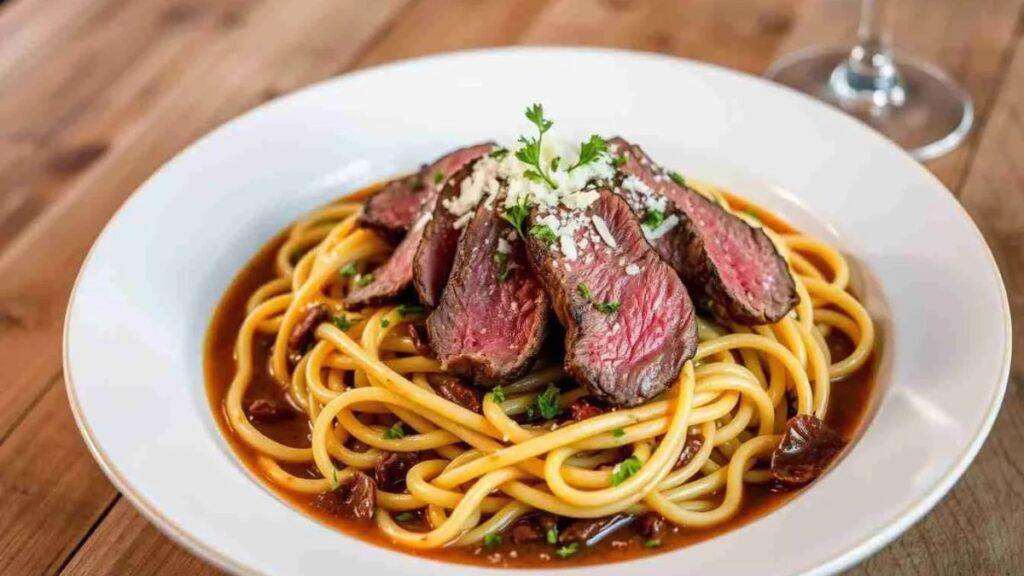Introduction to Tagliolini
Italy is a treasure trove of culinary delights, but few dishes are as charming and delicate as tagliolini. This ribbon-like pasta, with its fine texture and rich history, beautifully showcases the artistry of Italian cuisine. Whether slathered in a luscious sauce or paired simply with olive oil and cheese, tagliolini offers an experience that tantalizes your palate. Join us on a flavorful journey as we explore the origins, variations, and delightful recipes featuring this exquisite pasta. Discover how to elevate your meals with tagliolini—an Italian delicacy that never fails to impress!
History and Origin of Tagliolini
Tagliolini traces its roots back to the northern regions of Italy, particularly Piedmont and Liguria. This delicate pasta has been a staple in Italian cuisine for centuries.
The name “tagliolini” comes from the Italian word “tagliare,” meaning to cut. Traditionally, it is made fresh from flour and eggs, rolled thin before being sliced into long ribbons.
Historical records suggest that tagliolini was enjoyed by nobility during the Renaissance era. It quickly gained popularity due to its versatility and ability to pair beautifully with various sauces.
In homes across Italy, families began crafting their own variations of tagliolini recipes passed down through generations. Today, this artisanal pasta continues to be celebrated not just for its delightful texture but also for its rich heritage embedded in every bite.
The Difference between Tagliolini and Other Pasta Varieties
Tagliolini stands out among Italy’s rich tapestry of pasta varieties. Its unique shape is long and thin, resembling a delicate ribbon. This characteristic sets it apart from broader pastas like fettuccine or pappardelle.
The dough used for tagliolini often includes egg, giving it a richer flavor compared to many dried pastas made solely from semolina flour and water. This makes each bite sumptuous and satisfying.
Texture plays a significant role as well; tagliolini clings beautifully to sauces, enhancing the overall dining experience. In contrast, chunkier shapes like rigatoni can hold heavier sauces but might overshadow the dish’s subtleties.
When paired with ingredients, tagliolini shines in lighter preparations—think vibrant vegetable-based sauces or simple olive oil dressings that allow its taste profile to emerge fully. Each type of pasta has its place on the table, but tagliolini offers something distinctly elegant and refined.
Traditional Recipes using Tagliolini
Tagliolini shines in traditional Italian cuisine, bringing a touch of elegance to various classic recipes. One beloved dish is Tagliolini al Tartufo, where the delicate strands are tossed with earthy truffle butter and finished with shavings of fresh truffles. The aroma alone transports you straight to the heart of Italy.
Another staple is Tagliolini alla Panna, featuring a creamy sauce made from rich mascarpone and Parmesan cheese. This indulgent pairing highlights the pasta’s texture beautifully.
For seafood lovers, there’s Tagliolini alle Vongole. Here, tender clams mingle with garlic, olive oil, and a splash of white wine for an unforgettable flavor experience that celebrates coastal traditions.
These dishes showcase how versatile tagliolini can be while remaining true to its roots. Each recipe invites you to savor every bite while appreciating the artistry behind this exquisite pasta variety.
Modern Twists on Tagliolini Dishes
Modern cuisine embraces creativity, and tagliolini is no exception. Chefs today are reimagining this delicate pasta in ways that surprise and delight.
One popular twist is incorporating seasonal vegetables into the dish. Think vibrant asparagus or earthy mushrooms sautéed with garlic and olive oil, tossed with a sprinkle of parmesan for depth.
Another exciting direction is fusion flavors. Imagine tagliolini served with spicy kimchi butter sauce or a rich Thai green curry reduction. These combinations bring new life to traditional Italian roots.
Plant-based diets also inspire fresh takes on tagliolini. Vegan cream sauces made from cashews or coconut milk enrich the pasta without sacrificing flavor.
Don’t forget about unique toppings, either! A drizzle of truffle oil can elevate your dish instantly, while crispy pancetta adds texture and saltiness that’s hard to resist. Each modern interpretation showcases endless possibilities waiting to be explored.
Tips for Cooking the Perfect Tagliolini
Cooking tagliolini to perfection requires attention and care. Start with high-quality ingredients. Fresh pasta makes a significant difference in texture and flavor.
Use plenty of salted water when boiling. This enhances the taste of the noodles and prevents them from sticking together. Bring the water to a rolling boil before adding your tagliolini.
Cook it for just 2-3 minutes if fresh, or follow package instructions for dried varieties. Taste as you go; that’s key to achieving ideal doneness.
Once cooked, reserve some pasta water. This starchy liquid is perfect for adjusting sauces later on, ensuring everything blends seamlessly.
When combining with sauce, toss gently over low heat rather than boiling vigorously. This preserves the delicate strands while allowing flavors to meld beautifully.
Serve immediately after cooking for optimal freshness and texture. Tagliolini deserves that extra bit of love!
Pairing Wine with Tagliolini Dishes
When it comes to pairing wine with tagliolini, the options are as delicate as the pasta itself. Its fine texture calls for wines that complement rather than overpower.
For creamy sauces, a rich Chardonnay works wonders. The buttery notes enhance flavors without overwhelming your palate.
If you’re opting for seafood tagliolini, consider a crisp Pinot Grigio or Verdicchio. Their acidity balances out the dish and highlights fresh ingredients beautifully.
For meat-based sauces, try a medium-bodied Chianti or Barbera. These reds have enough structure to stand up to hearty flavors while maintaining harmony on the plate.
Don’t shy away from experimenting either! A sparkling wine can also bring an unexpected twist to your meal, elevating every bite with its effervescence.
Conclusion: Why Tagliolini is a Must-Try Italian Delicacy
Tagliolini is not just another pasta; it’s a symbol of Italian culinary artistry. Its delicate nature and rich history create a unique experience that transports you straight to Italy with each bite. Whether you’re savoring it in a traditional dish or enjoying modern interpretations, tagliolini offers versatility that appeals to various palates.
The process of making tagliolini, from kneading the dough to achieving the perfect thinness, showcases craftsmanship that deserves appreciation. This isn’t merely food; it’s an art form that brings families together around the table.
Moreover, pairing tagliolini with complementary wines enhances its flavors beautifully. It invites exploration and experimentation in your home kitchen.
For anyone seeking authentic Italian cuisine or looking for something new to try at their next dinner party, tagliolini should be on your list. Embrace this delightful delicacy and discover why it holds a special place in Italy’s heart—and soon, perhaps yours as well.






